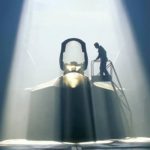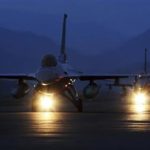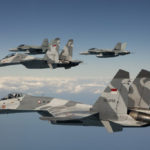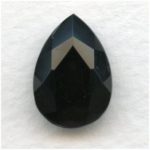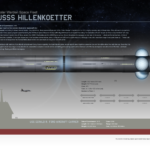Here are some deeper thoughts about this first university major of King Auz.
–
Table of Contents:
- Vocabulary
- It Wasn’t Even Needed at First
- Further Examples and Explanations
- Repulsines
- Species & Ship Examples
- Human Aerospace Engineering has Progressed in the Opposite Order
- 2020 Update: the Aerospace Engineering of Auz
- 2024 March/+
–
Vocabulary:
Aerospace Engineering: defined as the primary field of engineering concerned with the development of aircraft and spacecraft. It has two major and overlapping branches: Aeronautical Engineering and Astronautical Engineering. On this webpage, we’ll be covering its ancient origins and current issues.
-
relating to the science or practice of building or flying aircraft.“he went on to study aeronautical engineering at the Air Force Academy”
the branch of engineering that deals with the design, development, testing, and production of aircraft and related systems
-
the science and technology of human space travel and exploration.
and of spacecraft, missiles, rocket-propulsion systems, and other equipment operating beyond the earth’s atmosphere
–
It Wasn’t Even Needed at First:
The following lists how air & Space travel was achieved since the beginning (and that means the beginning of all that is, not just the start of American machine-assisted flight). The initial words are capitalized, emphasizing the overall nature of the flights and methods at that time. They are followed by a sentence or sentence fragment providing a few further details.
- CHOICE: The most advanced travel came first; people and worlds just willed themselves to be other places, not needing to really move or even open portals, let alone build and operate aircraft as we think of them today. They were the aircraft. (And, one might say, they were willing all of reality to move around them, rather than themselves through it.) These original aerospace engineers engineered air & space themselves, not just things that moved through air & space.
- MOTION: Then they willed themselves to MOVE to other places, as this became desired, though still rarely needed.
- WORLDS WILLED: For a time, the planets themselves were steered as ships; willpower was enough to move them, too. Many of the planets were still in regular direct communication with the beings that called them home, so they were able to coordinate their abilities to help move one another. Worlds and stars (which are really just giant worlds) also coordinated, and this went on until stable orbits were achieved for their very long periods of hibernation.
- WORLDS STEERED: The pyramids and related structures were built to regulate, harness, distribute, restore, and focus the planet’s energy, moving it around the same way a steering wheel or joystick does a vehicle or aircraft. Since most of the planets and stars had gone dormant and silent by this era, it was sometimes necessary to use these new structures and methods to adjust their orbits since they no longer consciously could; they were asleep, and it was up to those still awake (consciously aware in and of this dimension) to handle that for them.
- WORLD LAYERS STEERED: Later, the pyramids were used as terraformers or atmospheric generators, and moved only the atmospheres, though sometimes they adjusted the vertical direction of the oceans.
- WORLD LAYERS HARNESSED: Then those pyramids were used as power stations; they no longer moved the skies and seas, instead shifting their influence only to the ‘ether’ –and other energy realms and streams usually invisible to the human senses.
- WORLD HIBERNATION: The pyramids were now used as group/mass stasis chambers, serving as an entirely new kind of ship; these ships kept the physical bodies stationary in this dimension, while assisting in the transportation, navigation, and steering of the astral bodies through energy vortexes and other channels, such as the Webway, out across the new spaces between the stabilized worlds. Maintaining the hibernation of their bodies allowed both the human-sized and planet-sized beings to travel indefinitely in their non-physical forms, with protective ‘housing units’ (i.e. their old/original bodies/’shells’) preserved on eternal standby, should they ever need or wish to return and reuse them for a time.
- PORTALS TO HIBERNATING WORLDS: Then people made portals with their wills, and stepped through them. Some chose to use stone circles, arches, and other sturdy stabilizing frames to help open, maintain, or close common portal locations and conduits.
- SHIPS WILLED TO HIBERNATING WORLDS: Then they made ships that were simple vessels functioning as extensions of their will, though they were sometimes quite palatial in their interior decorations. They steered them with their minds, similarly to how a person chooses to move their own bodyparts to swim.
- SHIPS EMOTION-INFLUENCED WHILE STEERED: Then came ships which responded to their emotions, accelerating away when stressed or focused, etc. Control consoles similar to dashboards started to be used, though they had far fewer buttons and levers than the ones we use today.
- STARLIGHT FOCUSING SHIPS: After that were the ‘beam-ships’; they used special laser combinations to affect Space-time around the hull. These are, perhaps, the most familiar spacecraft to us, at least in terms of how similar they are to our high-tech commercial-airliner cockpits, albeit in an entirely radial layout, rather than cylindrical or linear.
- VOID/SCALAR SHIPS: UFOs, as we think of them today, are these; ‘flying saucers’, came next to last. Often piloted by biomechanical drones, such as some of the Grays, they usually require certain planetary magnetospheres to maneuver safely, their internal workings calibrated and/or hard-wired to function only in those regions. (And theirs are the engines and nodes we based our Repulsines on, though they themselves may very well have been based on still simpler and longer-lasting versions, such as the mercury-drives of the Vimanas.) Though they can pull their ‘fuel’ (and all energy needs) from Space itself, empty though it seems, they are more fragile and dangerous than the beam-ships that came before them, and must cross greater distances, thereby requiring more power, and increasing the potential moments for mishaps and course-altering encounters. The nature of these crafts indicates that they were made to stay in Space most of the time, not occasionally ferry aliens from world to world. The biology of their standard pilots and other occupants strongly suggests the same; the Grays are a race (or species) born in and for Space, perhaps even of Space, if that is even a thing.
- GAS/FUEL SHIPS: Aircraft incapable of Spaceflight were last. Some of the simpler Vimanas are examples of this. While the very first ships (numbered high above on this list) were the people themselves, and the later ones rarely needing to actually move at all, with the ships during the ‘middle’ times becoming slightly more complex and meant to only briefly connect distant points, more recent craft were made to be capable only of travel in Space, or (most recently) only of travel across much shorter distances, relatively speaking. In a way, the newest transports are hardly transports at all; they keep us stationary inside them, as well as stuck on the same thin layer of the same planet, no matter how ‘fast’ we are told they go. And instead of empowering us, they function as critical ‘crutches’; we would die if we ever left (or entered) them at the wrong times.
Technically, there is one more wave or ‘generation’ of vessels in this sequence; the most recent ones made by Earth humans for brief Space voyages are the most complex, most fragile, shortest ranged, most prone to problems, least comfortable, and able only to ferry a handful of tiny people along a very specific route plagued with nearly endless constraints, such as weather, Space weather, orbital debris, politics, fuel, inability to recharge anywhere, and on and on. Barely true ships or advanced creations at all, these bulky, clumsy, dangerous, gigantic, illogical contraptions are more like barely-airborne barges of chaos, and are woefully cost-prohibitive. They are in no way truly connected to their pilots and other operators, and might as well be catapulted corpses full of nearly mindless parasites who know next to nothing of true flight and Space travel. It is more accurate to say that they do not truly fly anywhere at all, but only help cage and keep their occupants or passengers safely contained and isolated from the civilized regions of Space which can barely stand their hideously radiated and nonsense-radiating presence. Believe it or not, the hulls of human Spacecraft are actually to protect Space from them, not the other way around –though the endlessly fragile humans certainly need shielding, too.
I’ll put this another way: aircraft of the 20th century actually carried hundreds of people each time they flew, and were reliable, safe, and up in the air very often. Compare that to ‘advancements’ which led to Space flights and stations; our current, publicly-known, ‘best’ Spacecraft rarely carry more than 3-5 people, and those people require extremely lengthy, expensive, specialized training. Their flights in those Spacecraft almost invariably harm them, even if only by long-term osteoporosis and related ailments. They are only moved to a few very specific spots, and rarely ever reliably, certainly not often. They use up unbelievable tons of fuel, causing arguably irreparable damage to our atmosphere every time. There is no way to ‘bail out’ from them during 99% of their trajectories; even civilian commercial airliners have that option in a variety of ways. This makes our Spacecraft far more primitive than our older aircraft; things are getting worse in aerospace engineering for our kind, not better. They are not advancing at all, contrary to the claims and popular belief. Just examine the designs, history, and other facts.
–
Further Examples and Explanations:
Even the ‘advanced’ nuclear-powered TR-3B; a reverse-engineered variant of recovered ‘UFO’ technology, is extremely primitive compared to both its inspiration and to all the classes of craft which came before –especially when including all of the ancient ones. (This is also true of the A.R.V., another saucer-like craft based on a reverse-engineered ‘UFO’.) The older the craft, the simpler and safer it was, as well as more responsive. Today, most craft can and do kill their riders in a vast number of ways, and accidents are common. In the beginning, accidents were impossible, and next to nothing could even harm the riders, let alone possibly kill them.
Yes, we’ve added many luxuries to modern aircraft, and made some gigantic spacecraft other than the I.S.S. (such as the 2.5 km-long Spacecraft carriers of the Solar Warden fleets), but they’re still just ‘mind-neutral’, disconnected, overly-complex, impossible-to-resist creations. Their minds (a.k.a. main guidance computers) and other systems are clumsy and extremely difficult for their users to interface with and override. (Try speaking in the split-second energy-pulses encrypted in their computer languages, using only your natural body-parts and much slower rate of thinking!) Their strength and momentum also dwarfs the negligible humans’ own. (Try pushing on one to change its direction, and enjoy feeling completely powerless against it!) As ‘advanced’ as some people like to think these things are becoming, they are really just becoming bigger and bigger headaches with the potential for budget-killing disasters.
To end on a positive note, I will say this: aerospace engineering is still an impressive field, and breakthroughs do still occur. It is an alternative to redeveloping our ancient natural means of travel across the distances we today are raised to believe are ‘great’. Most of the time, deaths do not occur; sometimes flying in these machines is safer than driving normal cars. Even the Spacecraft we made based on downed ‘UFOs’ have most of the bugs worked out, and have approached 90% of the efficiency and gravity-negation of their predecessors. It is also very fun to fly, and I personally enjoy it as often as I can, even knowing the inherent mortal dangers.
What I’d like to see happen, at least for the destined worthy few who feel called to achieve this, is an individual restoration of the ancient abilities to travel anywhere without need of ships, hibernation chambers in pyramids, stargate-like portals, or anything else; I want to see those things no longer used as ‘crutches’, but entertaining options –and maybe emergency backups for odd and extreme situations. I still plan to go into Space via Spaceport America and other means, but I also hope to soon be able to survive and maneuver with ease, no matter what happens to the Spacecraft, aircraft, dimension-craft, or any other craft I happen to be riding in or developing. My first degree program in a university was, after all, for a Bachelor of Science in Aerospace Engineering; I gravitated toward this field and all its creations, and have worked in it as a hobby ever since, meaning it is part of my essence, who I am, and one of the areas of knowledge I have always been meant to contribute to.
Sharing these thoughts on this webpage, along with the many other aerospacecraft designs I’ve worked on over the years, is how I currently make that contribution, moving the collective of those paying attention… that many more steps closer to truly advanced means of transportation (not just insanely complicated ones); the same kind our most ancient used –which happen to be the simplest, lowest energy, and safest.
–
Repulsines:
This is the term to indicate the type of engine which electromagnetically manipulates the energy fields and space around it to produce flight without need of ‘lift’; no wings, or pressure on them from air moving under or through them, is required. Often, there is a predominantly mercury fluid contained within each hollow ring of a Repulsine, and, when that fluid is accelerated within the ring (and especially when multiple such filled rings are themselves also accelerated in a gyroscopic formation about each other), very powerful, efficient, and precise Space-time warping effects are achieved.
The field of effect is also apparently exponential and endless;
- Build Repulsines the size of marbles, and you can cancel out the weight, air friction, and inertia of a person.
- Build them the size of basketballs, and you can do the same for a large UFO or cargo plane.
- Build them the size of beach balls, and you can probably make an aircraft carrier fly with ease.
- Build them the size they are in Inisfree (1-mile diameter), and you can see how a 10-mile wide city can take off like an extra-large airplane or starship.
- If they are even larger, they can move worlds, stars, and even Dyson Spheres around; this is one way of making a Death Star possible. (Though, of course, its peaceful and helpful opposite; what one might call a Life Star, is the preferable application.)
- Make Repulsines the size of worlds and stars themselves, and you can steer the solar systems and overall path of an entire galaxy. You get the idea; repulsines are VERY powerful movement devices that can make even the greatest of relocation or orbit-stabilization tasks feasible.
In history, we hear only briefly of their crudest inspiration; the ‘Nazi Bell’ is talked about on a few shows, now and again, but no one ever goes into any detail about its components, individual tests, or successes. Conspiracy-theory websites seem allowed to talk about this and Repulsines, but their teaching efforts remain largely monitored, delayed, and compartmentalized. Most likely, the only human use of this technology is in the various Secret Space Programs; the U.S.A.’s Solar Warden, and the equivalents from China, Russia, and who knows which other nations?
The overall trajectory of the development of Repulsines and all aerospace technology, then, seems to be this: over the successive eras and Ages since the original ancients, people have felt a steadily growing interest in both 1) making things more complex and take longer in order to be more mentally stimulating, riskier, thrilling, and relieving, and 2) keeping each push toward more-specialized inventions as compartmentalized and exclusive as possible, perhaps in order to make any of the rare discoveries of, or introductions to, these things feel that much more special, elitist, and empowering. Adventure and pride seem to be the underlying motivators here, though over-specialization and brain-power atrophy to the point of minds becoming vestigial could just as easily be blamed. I guess aerospace engineering, on this vast time scale, boils down to the ‘glass half-empty or half-full’ question; do you see the way aerospace engineering has changed over the generations and civilizations as a good thing or a bad thing?
For me, it can be both; the new ships are cool and worth riding in, but it is still definitely worth doing all we can in order to evolve to be more capable than them before putting our lives in their hands. I maintain that they should not be our ‘crutch’, just as no technology should be; dependency and vulnerability are not generally recipes for success. We may again achieve some level of symbiosis, singularity, and mutual understanding with our sophisticated machines, but why not take the time to develop ourselves just as much as we have been developing these crafts?
–
Species & Ship Examples:
- Deity: uses itself/everything, and can move everything around itself, rather than moving itself
- Demi-deity such as a Space Whale: uses itself and certain location markers, moving at any speed, not needing portals
- Space Whale as a transport: uses its sensory awareness of, and energetic connections to, other Space Whales / worlds, to make logical course corrections as a subset of directional commands from its pilot
- Planet Gor: uses the Nest to steer the entire world through Space
- Earth: uses pyramids to both move and harness its layers
- Earth: uses pyramids to harness or make its atmosphere
- Earth: uses pyramids to hibernate on the hibernating host (world; dormant Space Whale)
- Inisfreean: uses herself to create and adjust portals big enough for herself or groups (and the same is true of Inisfreean ships up to and including Inisfree-city itself; they are all conscious, fully integrated/networked, and will their own bodies/structures to create any portals they may need, which technically puts them in the choice-based transit deity-class, except that they are much smaller than the original deities/worlds/stars)
- Early Vimana: uses the will of the pilot, and sometimes/later proto-repulsines
- Unknown UFO reported: uses the emotional energy of the pilot (and sometimes additional crew members) to help accelerate, brake, and maneuver
- Pleiadian beam-ship: uses lasers and ‘thought-mode’
- Gray saucer: uses a void drive and repulsines
- USS TNH: uses repulsines and lower-tech backup thrusters/boosters/retro-rockets, among other things
- Human ship: uses fuel which 1) is rapidly depleted on every outing/voyage, 2) cannot be made by the ship, 3) is used up by all ships of this type more quickly than natural processes can create or replace/replenish it, 4) damages the environment around the ship, and 5) is often lethal to the people aboard the ship, if ever they become exposed to it; as primitive as it gets, even with ‘advanced’ human Spacecraft
–
Human Aerospace Engineering has Progressed in the Opposite Order:
Humanity in the current era actually started with the most limited local travel, entirely void of any direct will-power; complex metallic combustion engines with non-renewable fuel sources were attached to fragile wing-like frameworks and flown for just a few meters and seconds at a time. They then added size, comfort, additional controls, speedier control systems (such as voice recognition), and lately a ‘by-mind’ interface which interprets EEG signals instead of waiting on manual commands entered by hand or foot. Recovered vessels from non-human sources have given the current Earth humans some insights into how engines and other craft components can be engineered to respond to not only manual commands and thoughts, but also emotions.
- 1900s: prototype & gas-powered, manually controlled
- 1910s: local & gas-powered, manually controlled, autopilot being prototyped
- 1920s: mid-level atmospheric & still gas-powered, manually controlled, autopilot being field-tested
- 1930s: high-level atmospheric & still gas-powered, manually controlled, autopilot in limited production
- 1940s: low-orbit & usually gas powered (though now in the form of rocket-fuel), manually controlled with radio-based assistance, autopilot in heavy production
- 1950s: mid-level orbit & sometimes at least partially nuclear powered, manually controlled with radio-based assistance, and remote-autopilot being prototyped
- 1960s: high-level orbit & often nuclear powered; 1st publicly-known artificial satellites launched, manually controlled with radio-based assistance, and both local and remote autopilot options, with voice recognition being developed
- 1970s: interplanetary & nuclear powered, with portals reverse-engineered only as stationary terrestrial gates; not yet available for or aboard moving vessels, and with voice recognition options
- 1980s: interstellar & nuclear powered, with brief portal options for the entire ship, and time-travel in R+D (possibly when the earliest test-flights of the TR-3Bs were; late ’80s), with ‘by-mind’ interfaces being prototyped
- 1990s: intragalactic & nuclear powered, with more portal options, and void/scalar in R+D (humanity’s version of the Gray saucers, and when the first reported sightings of the TR-3Bs were; early ’90s), with ‘by-mind’ interface options
- 2000s: intergalactic/universal & nuclear powered, with many portal options, and laser-based warp/time-systems in R+D (humanity’s version of the Pleiadian beam-ships), with emotion-energy/interface technology being prototyped
- 2010s: interdimensional/megaversal & (possibly/partially; unconfirmed) void/scalar powered, with ‘by-mind’ interfaces and emotion-energy/interface options
- 2020s & beyond: Humanity will eventually go beyond terraforming to helioforming, planet-steering techniques, planet-making techniques, star-making techniques, galaxy-making techniques, dimension-making techniques, and doing all of this with their own bodies, no longer even using the sophisticated ‘by-mind’ interfaces for their latest advanced machines.
–
–
2020 Update: the Aerospace Engineering of Auz
By definition, I am an aerospace engineer (as well as an engineer in other fields). You may note from the following definition that an engineer does not require a degree, certificate, or other official document stating he is an engineer. All one must do… is engineering work of any kind.
-
the branch of science and technology concerned with the design, building, and use of engines, machines, and structures.
-
the work done by, or the occupation of, an engineer.
-
the action of working artfully to bring something about.“if not for Keegan’s shrewd engineering, the election would have been lost”
-
-
design and build (a machine or structure).“the men who engineered the tunnel”
-
skillfully or artfully arrange for (an event or situation) to occur.“she engineered another meeting with him”
-
modify (an organism) by manipulating its genetic material.“it is now possible to engineer tobacco plants that are resistant to the virus”
-
–
While I did not finish earning that engineering degree at the first university I attended (thankfully sparing me from their brainwashing to only believe in primitive and backward tech’), I have done aerospace engineering work for much of my adult life; I studied it on my own, read magazine articles about aircraft and Spacecraft since childhood, met and was briefed by users of them (pilots and others), took flying lessons, dreamed up better ways of flying and making aircraft (via 3D-printing, using UFO tech’, etc.), and I even invented a whole city-sized air/Spaceship; Inisfree (not to mention the skyscraper-sized, miles long, moon-sized, planet-sized, and star-sized ones I invented).
Let’s revisit the definition components:
- a skillful contriver or originator of something
“the prime engineer of the approach” - design and build (a machine or structure)
“the men who engineered the tunnel” - skillfully or artfully arrange for (an event or situation) to occur
“she engineered another meeting with him” - modify (an organism) by manipulating its genetic material
“it is now possible to engineer tobacco plants that are resistant to the virus”
I’ve designed so many things, and figured out better ways to build pre-existing ones,
I know ways to maintain them with thoughts/willpower/focus (instead of mechanics and others),
I’m “a skillful contriver or/and originator of [them]”
and I’ve modified organisms by (with my mind/willpower/wisdom) manipulating their genetic material (even to the point of realizing that DNA claims (what “scientists” pretend to have evidence of) are just more brainwashing/assumptions/errors (on their part, and on the part of those who mindlessly memorize them without question), the “evidence” for them manifested only because people started believing it).
No, I don’t have a suit, a desk job, a piece of paper saying I memorized what a college claimed (was bribed to teach) about aerospace engineering.
No, I don’t help design or build or maintain human (crappy) air/Spacecraft.
Yes, I do still do aerospace engineering work –and I work from the comfort of my own home –and on far more advanced stuff than Skunkworks does (b/c they use tech’ as a crutch, overcomplicate things, require funding, etc.).
Also, it is probable that I am the result of an aerospace engineering project;
- I’ve always felt instinctively (genetically) drawn to the skies and Space,
- I was told I was born on a ship out at “sea” (perhaps meaning the “ocean” of Space, or an air/Spacecraft that happened to be just over, or in, a sea/ocean),
- I’ve always been excellent at moving land-based (infantry) game-characters as if they were aircraft in free-fall (such as during combat simulations, where jumps, falls, and rocket-based sniping were the most-efficient tactics),
- I move that way in many of my dreams, too,
- I feel more comfortable in the air than on the land,
- I feel drawn to UFOs instead of afraid of them,
- I’ve been able to stay completely calm and happy when piloting aircraft, as well as when “catching air” in my vehicles,
and I seem to have some ability to calm down them and the air around them, - keeping them operating more smoothly than they would otherwise,
- even through the Convergence Zone.
So… was I designed, built, and just as clandestinely maintained to do all this?
Was I designed to be the best pilot, air/Spacecraft engineer, and (living) air/Spacecraft myself?
Was I designed to design Inisfree, the most advanced air/Spacecraft so far?
Was I designed… that one day I might/would figure out how to restore ALL objects in the sky (UFOs, planets, stars, and Space itself) to their original state/purpose (as air/Spacecraft themselves, willingly controlled by me, due to me sending them my attention and love)?
They say there are no coincidences. Consider all the aerospace engineering I’ve done… and do.
–
2024 March/+:
UFO tech’ is beyond human ability to back-engineer… b/c it was manifested by beings who knew they could speak such things into existence; it did not require factories or tools or chemicals or fuel or anything humans have always been dependent on / limited to.
That is why the best they can do is hide things in Area 51’s bunkers (among other places), and retrofit them with their primitive hyper-complex fuel-depleting engines.
That is why they can only temporarily bend slivers of Space/ether, never permanently changing it (i.e. manifesting anything stable).
..
UFOs were clearly made by Anunnaki… who were almost certainly Asgardians living in safety on a world humans hadn’t been manifested by / drawn to.
..
It will never be possible with human tech’ to make things as seamless and perfect as the creations of all-powerful zero-doubts zero-brainwashing zero-distractions perfect-focus thoughts/visions of the deity and demi-deity ancients. Human factories just don’t work like that, no matter how sophisticated their 3D-printing may get. You simply have to become able to manifest things by thought and word alone, no tech’/machine “middlemen”.
..
As long as humans try to figure out how to create UFOs with human tech’, rather than figure out the tech’/methods which made the UFOs, those humans will fall short of their R+D goals in this area/field.
–

